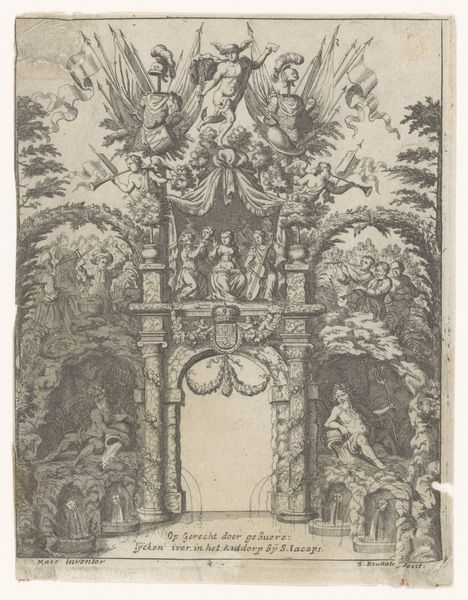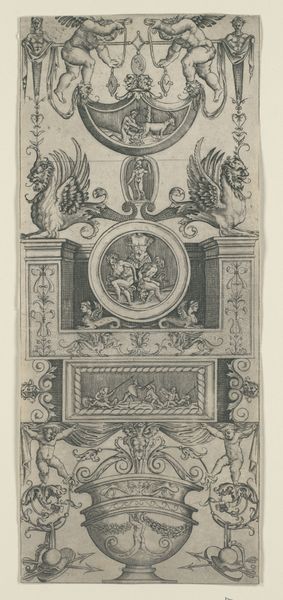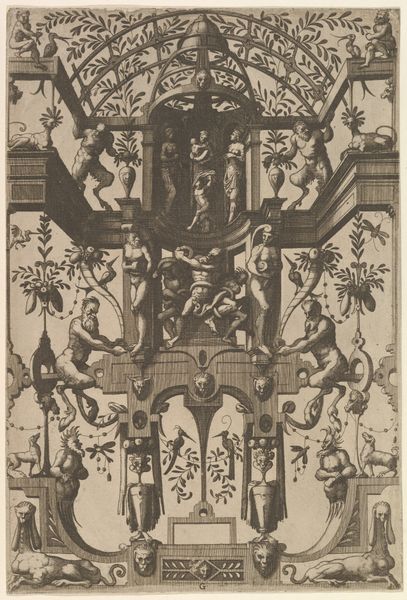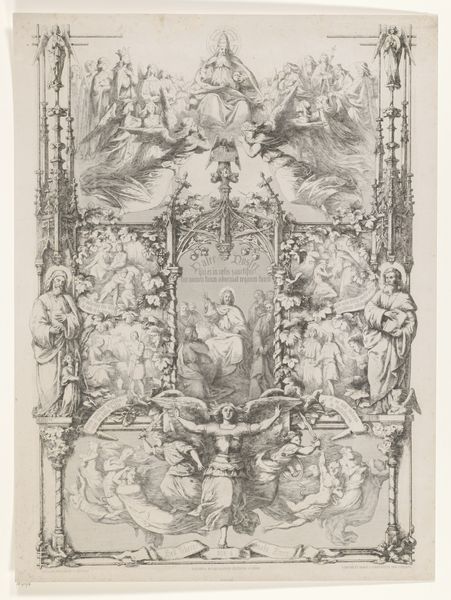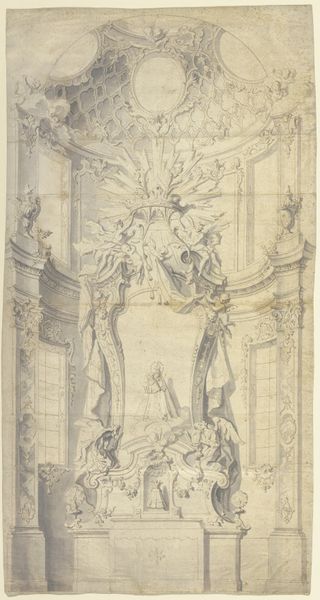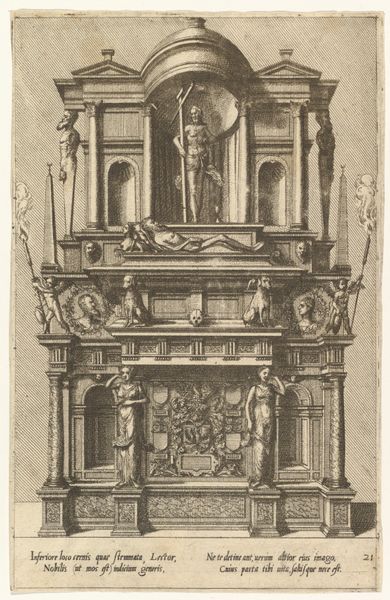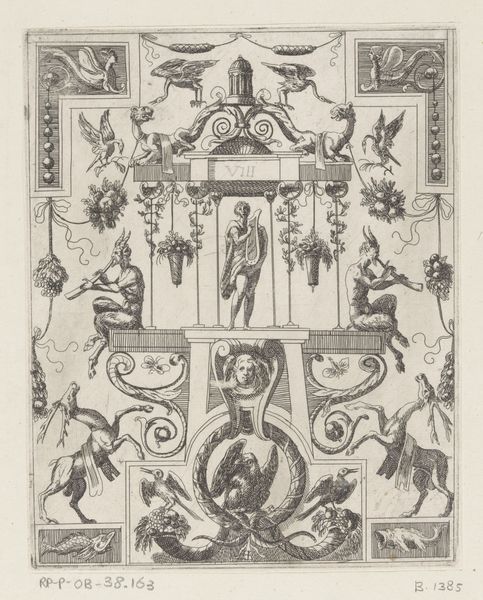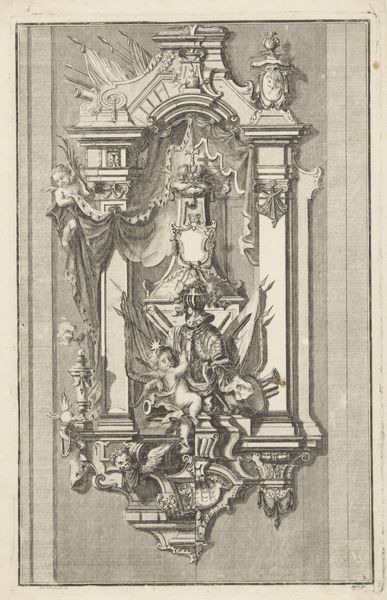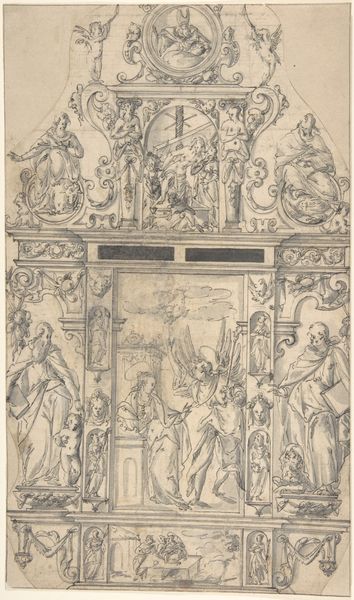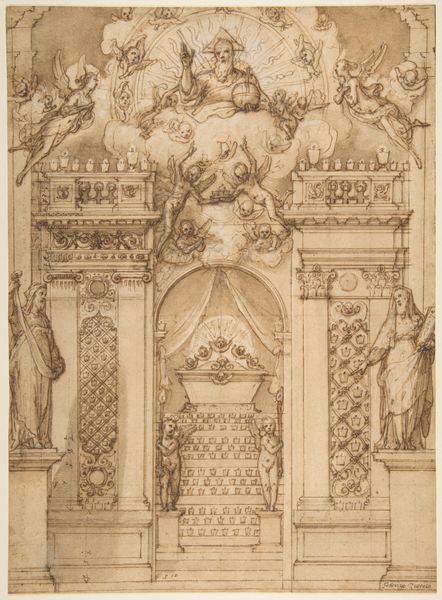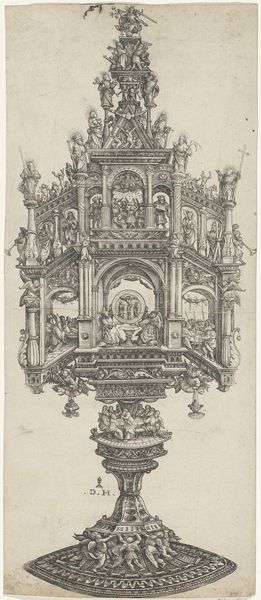
Triomfpoort opgericht door de broeders van de Onze-Lieve-Vrouwekathedraal before 1685
0:00
0:00
drawing, print, engraving, architecture
#
drawing
#
baroque
#
pen drawing
#
mechanical pen drawing
# print
#
pen illustration
#
pen sketch
#
sketch book
#
personal sketchbook
#
pen-ink sketch
#
pen work
#
sketchbook drawing
#
cityscape
#
history-painting
#
sketchbook art
#
engraving
#
architecture
Dimensions: height 168 mm, width 135 mm
Copyright: Rijks Museum: Open Domain
Editor: This is a drawing by Gaspar Bouttats, "Triomfpoort opgericht door de broeders van de Onze-Lieve-Vrouwekathedraal," created before 1685. It's currently held at the Rijksmuseum. It looks like an intricate pen and ink drawing. It depicts an ornate triumphal arch with a bustling cityscape. It makes me wonder about public celebrations. What's your take on this artwork? Curator: As a materialist, I'm most interested in the processes behind this "drawing". It's described as a pen drawing, but also an engraving and a print. We should examine the material conditions of its production. What kind of paper was used? How was the ink sourced? Was it a solitary act, or did assistants help with the repetitive elements of this ornamentation? It's supposedly "erected by the brothers of the Cathedral," so, what role did their labor play in creating not only this artwork, but also the celebratory space and social spectacle that the image refers to? Editor: That's a great point. I was focused on the finished product and the symbolism. The print medium also speaks to reproducibility and access, doesn't it? Curator: Exactly. Think about the societal function of distributing such images. This wasn’t simply a piece of art, but a tool in constructing and reinforcing power. By meticulously detailing the material world—the architectural structure and the objects within—Bouttats participates in defining Antwerp’s identity and projecting its ambition, turning civic pride into a tangible, consumable commodity. Editor: So, analyzing the materials and labor tells us more about its original function and the societal forces at play. Curator: Precisely. The Baroque style often obscures the labor involved. We have to dig into the materiality and means of production to see the bigger picture of 17th-century Antwerp. Editor: That really changes how I see it! Thanks for that insightful explanation. Curator: My pleasure. Considering materiality can really illuminate the socio-economic realities of the past.
Comments
No comments
Be the first to comment and join the conversation on the ultimate creative platform.
